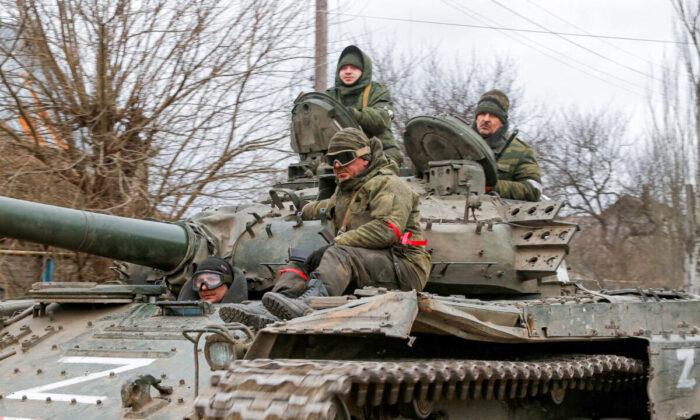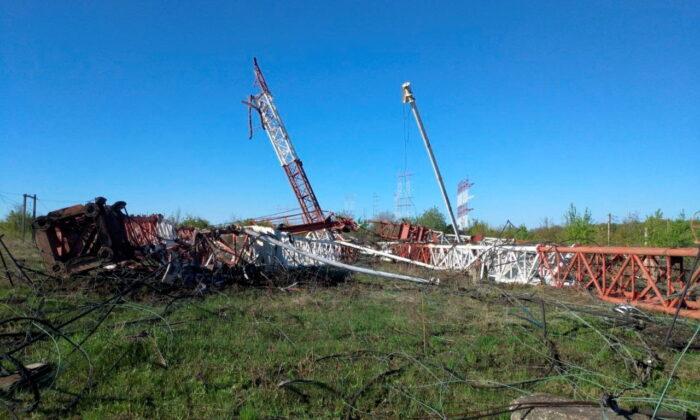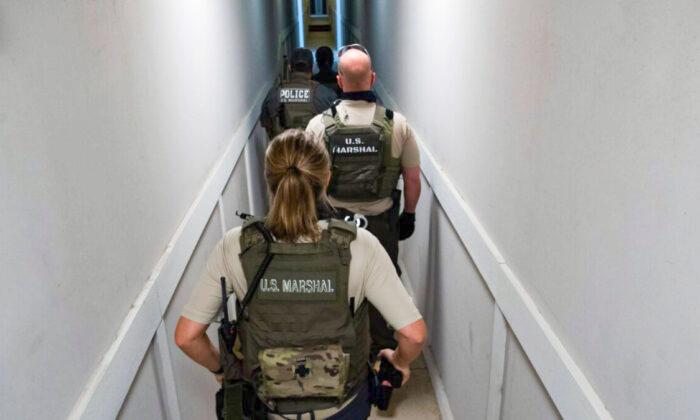Newly released photos reveal the extent of damage inside the U.S. Embassy in Baghdad, after the building was stormed by some Iran-backed militiamen and their supporters in retaliation for the United States conducting “defensive strikes” on targets related to the group in Iraq and Syria.
Photos of the damage were released on Jan. 1 by The Associated Press, and show the charred remains of a reception room, shattered windows, and scattered debris inside the embassy compound.
The protesters, which included members of the Iran-backed Kata’ib Hezbollah, on Dec. 31 breached the outer walls of the embassy in Baghdad, threatening the lives of Americans inside.
Some Iraqi security forces tried to keep the groups at bay as the crowd scrawled slogans on walls, hurled stones at buildings, and chanted “death to America.”
The attack came after the United States had launched “defensive strikes” against the group following the death of a U.S. defense civilian contractor in a Kata’ib Hizbollah rocket attack on a northern Iraqi military base.
The orchestrated attack on the embassy prompted U.S. President Donald Trump to order the deployment of about 750 soldiers from the U.S. Army’s 82nd Airborne Division alert brigade to Kuwait.
After two days of attacks and clashes with U.S. security forces, the Iranian-backed mob withdrew from the perimeter of the Baghdad complex, the Iraqi military confirmed in a statement.
“All protesters have withdrawn, tents dismantled, and other forms of demonstrating that accompanied these protests have ended, and the Iraqi security forces have completely secured the embassy perimeter,” it stated.


The withdrawal, which followed calls from the government and senior militia leaders, ended a two-day crisis marked by the breach of the largest and one of the most heavily fortified U.S. diplomatic missions in the world.
U.S. Marines were guarding the compound on Jan. 1, responding with tear gas and by dropping flares from aircraft. There were no injuries on either side and no U.S. staff were evacuated from the compound.
Kata’ib Hezbollah, the Iran-backed group targeted by the U.S. airstrikes, initially refused to leave, but later bowed to demands to disperse. The group is separate from the Hezbollah terrorist group in Lebanon, although both are backed by Iran.

“We don’t care about these planes that are flying over the heads of the picketers. Neither do we care about the news that America will bring Marines,” said Mohammed Mohy, a spokesman for Kata’ib Hezbollah. “On the contrary, this shows a psychological defeat and a big mental breakdown that the American administration is suffering from.”
Trump on Dec. 31, 2019, dismissed concerns that tensions between the United States and Iran could spiral into a war amid the unrest.
“Do I want to? No. I want to have peace. I like peace,” the president told reporters at his Mar-a-Lago club in Florida. “And Iran should want to have peace more than anybody. So I don’t see that happening.”





